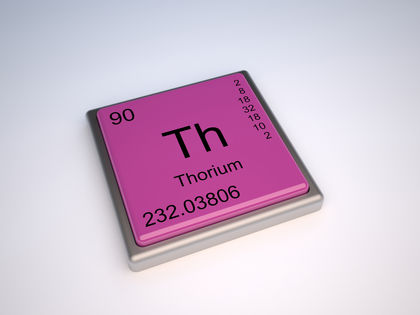The Promise of Thorium
February 4, 2016
In 1942, Glenn Seaborg, the legendary chemist and physicist who discovered Seaborgium, Neptunium, and Plutonium, began to experiment with Thorium. He assigned the task to his colleague to determine whether the material was suitable for nuclear energy. His colleague confirmed that it was, and Seaborg dubbed it a 50 quadrillion dollar discovery.
But ultimately, the promise of thorium nuclear energy went unfulfilled. When given the choice between working with uranium and thorium, the US government chose uranium, partly because of prior experience with it, partly to breed plutonium, which was crucial to weapons development at the height of the Cold War. Thorium energy went under the radar for some 50 years.
Only recently has interest in this nuclear energy arisen once more. Kirk Sorensen, a physicist formerly employed at NASA, has created his own startup, which intends to create a revolutionary reactor on the basis of thorium energy.
Sorensen stumbled upon thorium energy when attempting to devise a way for lunar communities to be powered. The moon, devoid of natural resources, wind, and out of the sun’s way for two weeks at a time, could only be powered by nuclear, but the uranium reactors of the day were incompetent for the job.
Uranium reactors, which are fueled by uranium oxide, require water to exist under immense heat and pressure, to serve as a coolant. Because, in its gaseous state, water vapor is 1,000 times the volume of water itself, the containment structures must be very large relative to the actual reactors in order to maintain the required pressure. This creates a potent risk: meltdown. If pressure is lost, the water turns into steam, and unless coolant is rapidly delivered to the reactor, meltdown will occur. If the events at Chernobyl are any indicator, this is generally not a good thing.
Another serious detriment of the contemporary uranium reactor is that it uses solid fuel. Solid fuel is expensive and inconvenient to make, and because it is quickly corroded, only one percent of energy can be extracted from the uranium before it must be removed from the reactor and be classified as waste.
But thorium is a different kind of nuclear energy. It is not based on water cooling, nor does it use solid fuel. Thorium reactors are entirely liquid, and they are cooled by salts. Salts, like mixtures of fluorine, sodium, and other elements are much more stable, have a higher boiling point, and, most importantly, don’t have to operate under high pressures. Already, this solves two problems. Firstly, there is no longer a need for a large, thick, and generally inconvenient containment building. More importantly, the thorium reactor cannot melt down. Unlike the solid fueled reactors, where the fuel melts down if coolant is withdrawn, the thorium is already in a liquid state, meaning that it cannot melt down, quite literally. If thorium is no longer cooled, the reaction simply slows down and stops without much ado. It can shut itself down if something goes wrong without human intervention.
The other benefit of the fact that a thorium nuclear reactor is liquid is that it is much, much more efficient. Whereas uranium can only be used to one percent of its potential before it must be replaced, the rate for thorium is almost 100 percent. In fact, Sorensen has stated that “we can use thorium 200 times more efficiently than uranium”. “One ton of of thorium can produce as much energy as 200 tons of uranium, or 3.5 million tons of coal”.
Additionally, the thorium reactor produces very little waste, precisely because it is so efficient. Whereas the byproducts of a uranium reaction must be stored underground or in isolation for thousands of years, within 10 years 83 percent of the reactants from a thorium reactor are stable and actually have applications in other fields. The other 17 percent need only remain in storage for 300 years, which, while still significant, is still much less waste which must be stored for much less time.
In addition, thorium is extremely abundant naturally. Unlike solid uranium, which is in limited supply and must be prepared at great expense, thorium is naturally abundant and requires little preparation. There is enough thorium in the world right now to meet the world’s energy needs in their entirety for the next ten thousand years. An area the size of a football field could potentially produce enough thorium in one year to power the entire world.
A thorium nuclear reactor would be cheap, small, two hundred times more efficient, meltdown-proof, and, in fact, proliferation proof, and powered by an abundant and cheap fuel. Thorium is the answer the the world’s energy crisis in the face of a limited supply of fossil fuels.
“I feel that it is a viable method of energy acquisition with quite little drawbacks and hazards. Caution needs to be taken in its usage to mitigate its risks to the environment, despite being lower than the risks of conventional nuclear, but I have faith in its safety, efficiency, and cleanliness,” says sophomore Evan Fairweather.







Natalie Chung • Feb 16, 2016 at 7:43 PM
I found this article to be extremely intriguing. I have always heard about researchers trying to find new efficient forms of energy that could be used in the future. Many of the current materials we are using are toxic, dangerous and inefficient. Hearing that researchers have found some insight into using Thorium is exciting because it may play a major role in producing much of our planet’s energy in the future. I am very eager to see how this superior element will help shape our future in producing energy.